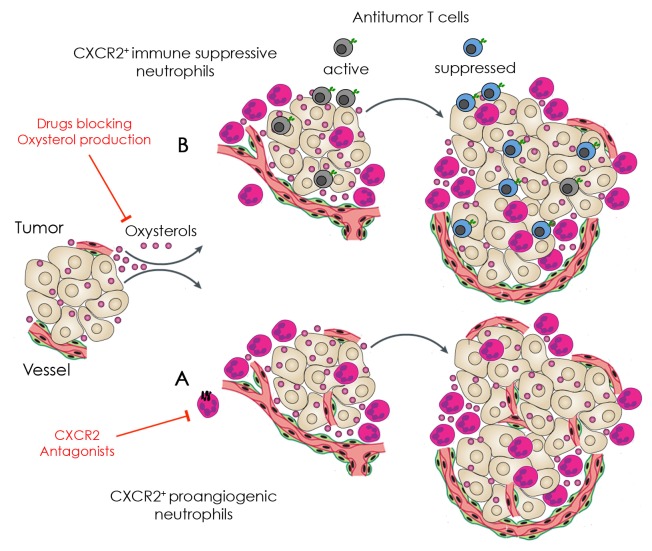Figure 1. Involvement of oxysterols in the recruitment of neutrophils to neoplastic lesions and possible points of therapeutic intervention. (A and B) Cancer cells release oxysterols in the extracellular milieu, resulting in the recruitment of tumor-supporting neutrophils. Such neutrophils mediate pro-angiogenic effects by releasing matrix metalloproteinase 9 (MMP9) and prokineticin 2 (PROK2, also known as BV8) (A), as well as immunosuppressive functions, as they inhibit antigen-specific T cells (B). Agents that antagonize chemokine (C-X-C motif) receptor 2 (CXCR2) (A) or block oxysterols (B) may inhibit the recruitment of tumor-supporting neutrophils, hence restoring antitumor immune responses that may delay disease progression or even eradicate established lesions.

An official website of the United States government
Here's how you know
Official websites use .gov
A
.gov website belongs to an official
government organization in the United States.
Secure .gov websites use HTTPS
A lock (
) or https:// means you've safely
connected to the .gov website. Share sensitive
information only on official, secure websites.
